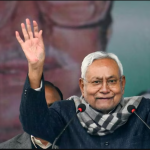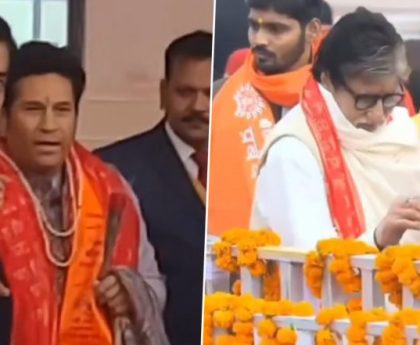Ayodhya’s Historic Journey
The grand consecration ceremony of the Ram temple in Ayodhya, Uttar Pradesh, marks the resolution of a century-and-a-half-long religious and political dispute. The construction of this sacred temple, which began after January 22, signifies the triumph of a determined movement that endured protracted legal battles, communal strife, and remained a burning election issue for decades.
Historical Background:
The roots of the Ayodhya dispute trace back to the 16th century when Mir Baqi, a commander of Mughal emperor Babar, demolished a temple in Ayodhya to build the Masjid-i-Janmasthan (Babri Masjid). This mosque stood for centuries until its controversial demolition in 1992 by Hindu karsevaks, leading to widespread violence and communal tension.
Evolution of the Dispute:
The Ayodhya dispute centered around the ownership of the site where the mosque stood, with conflicting claims about it being the birthplace of Lord Ram. The controversy first surfaced 300 years after the mosque’s construction when a group of Sunni Muslims attacked the Hanumangarhi temple, alleging that it was built by demolishing the mosque.
Legal Battles and Political Intrigues:
The dispute reached the courts in 1885 when Mahant Raghuveer Das filed a petition to build a temple on Ram Chabutra. However, the plea was repeatedly rejected, leading to sporadic peaceful protests over the next 48 years. In the 1930s, a new chapter unfolded as Shia and Sunni communities engaged in a legal battle over Masjid-i-Janmasthan.
Political Dimensions:
Post-independence, the Ayodhya movement gained momentum, with the Congress making the Ram Temple an electoral issue. In 1949, allegations of a Ram idol being placed inside the mosque fueled tensions, prompting Prime Minister Jawaharlal Nehru to intervene. The situation worsened, leading to the mosque’s lockdown within six days
Rath Yatra and Demolition:
In 1984, the Ram temple movement intensified under BJP leader Lal Krishna Advani. The Rajiv Gandhi government’s decision to open the gate inside Masjid-i-Janmasthan in 1986 further fueled tensions. In 1989, Prime Minister Rajiv Gandhi permitted the laying of the foundation stone, bringing the dispute to Allahabad High Court.
Legal Resolutions:
In 1992, Karsevaks razed the mosque, leading to the formation of the Liberhan Committee. The Narasimha Rao government issued an ordinance in 1993, acquiring 67.7 acres of land. In 1994, the Supreme Court upheld the constitutionality of the acquisition law. The Ayodhya title dispute began in 2002, culminating in the 2019 Supreme Court verdict favoring the construction of the Ram temple through a trust.
In Conclusion
The journey from dispute to divine elevation in Ayodhya reflects a complex and tumultuous history. The resolution of the Ayodhya dispute with the construction of the Ram temple signifies a historic moment, marking the end of a prolonged and contentious chapter in India’s socio-political landscape.




